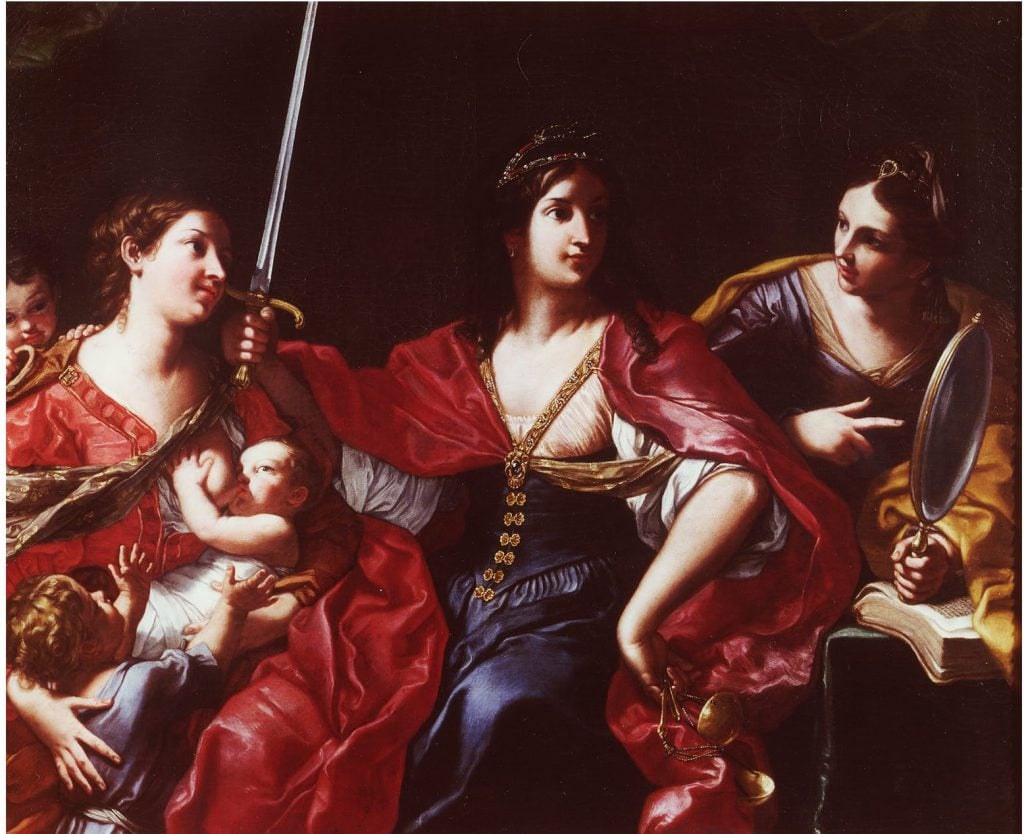We may never know exactly how many paintings Elisabetta Sirani created. This isn’t because her Baroque altarpieces, portraits, and paintings of fabled heroines weren’t cherished—in her lifetime patrons clamored for her works, commissioning and collecting them (despite her steep prices). And it isn’t because Sirani was a messy record-keeper, either. The Italian painter kept a detailed work journal, published soon after her death.
As the only known work ledger for a woman artist in the 16th or 17th centuries, Sirani’s journal listing the 203 paintings and two prints she made for 100 different patrons is a rare document. She also wrote the subject of each painting and how she developed her concepts and compositions, giving unique insights into her work process.
Still, we may never be sure exactly how many paintings La Sirana (as she was nicknamed) committed to canvas because she made many in secret. According to her biographer and close family friend, Carlo Cesare Malvasia, Sirani was the breadwinner of her family’s workshop (after her father contracted gout) but her dad managed her earnings. As a workaround, Sirani painted artworks that he didn’t know about and left them out of her work ledger—meaning her oeuvre is even grander than the 205 artworks she recorded making in her short, decade-long career.
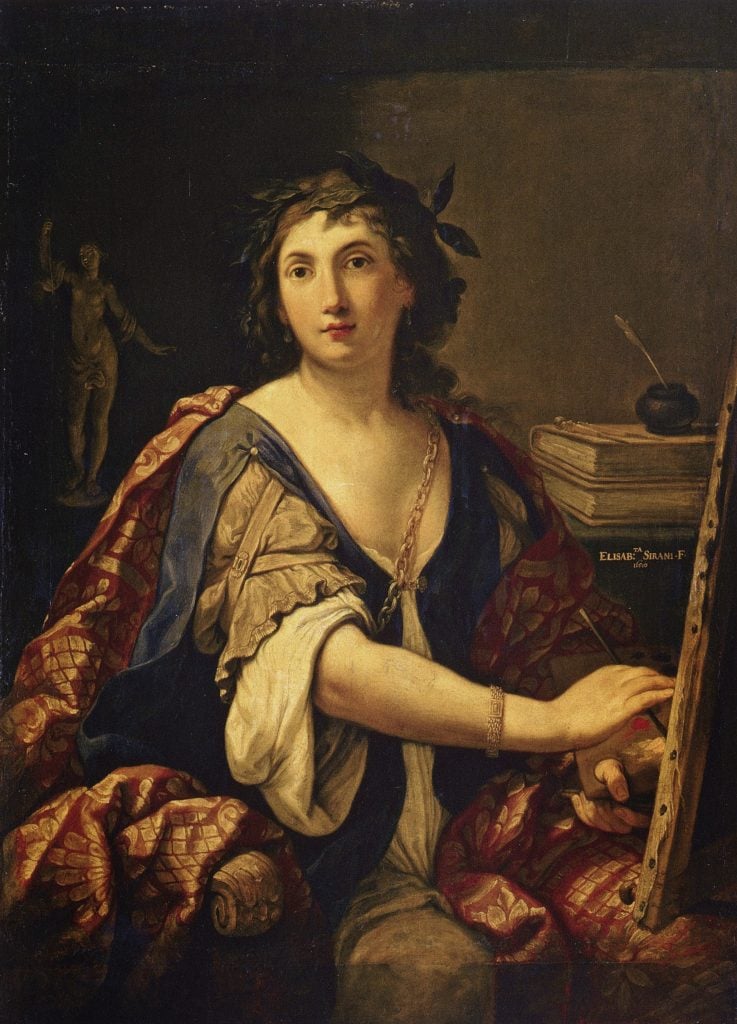
Elisabetta Sirani, Allegory of Painting (possibly a self-portrait, 1658), oil on canvas. Photo: © The Pushkin State Museum of Fine Arts, Moscow
“She often gifted [these secret] works as thank-you pieces for commissions,” explains Adelina Modesti, a Sirani scholar and honorary senior fellow of art history at the University of Melbourne. “She also used them as barter for household necessities and medicine without her father’s knowledge.”
An attempt to see a fuller inventory of Sirani’s career than the version she left behind in writing comes in the form of a biography being released this month, Elisabetta Sirani (Lund Humphries, June 2023) written by Modesti. It is the first English-language book with a full overview of Sirani’s work, whose legacy was celebrated after her death but then increasingly overlooked when the Bolognese school fell out of favor.
Scholarly interest in her has seen a revival since the feminist wave of the 1970s, and in 2018 she had a solo exhibition at the Uffizi Galleries. This biography introduces previously unpublished works by Sirani, including The Virgin Annunciate (1658) and The Angel of the Annunciation (1663), both of which surfaced on the art market recently.
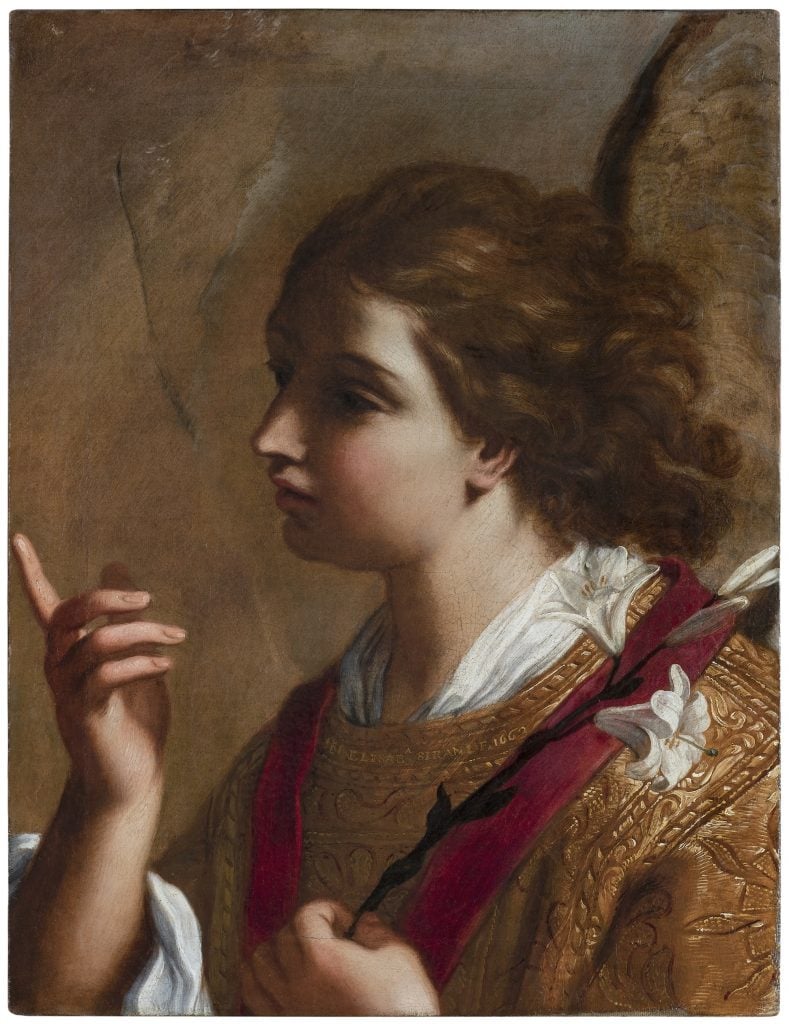
Elisabetta Sirani, The Angel of the Annunciation (1663), oil on canvas. Photo: Private collection in Bologna, since 1930.
Telling Sirani’s story from the beginning, the biography introduces her father—artist, merchant, and professor of life drawing Giovanni Andrea Sirani, who trained Elisabetta and her two younger sisters, Barbara and Anna. Giovanni provided Sirani with a complete humanist education that included technical and theoretical artistic training, and access to his large library of classic and religious books.
She began working as an independent painter by the time she was 17 years old, and at age 24 when her father’s health worsened, she started running the family workshop (where her sisters also worked). She’s also believed to have taught women artists, creating a new female-led model of art instruction at a time when women were trained by their fathers or other men in their orbit.
“Her teaching and success proved extremely influential on the following generations of Bolognese women artists. She never married (though it is unclear whether by choice or circumstance), pursuing a career in the arts rather than matrimony and childbearing, thereby representing a new social category of femininity—the single professional woman,” shares Modesti. “She was also the first woman artist to be compared positively to male artists by her contemporaries.”
Bologna was particularly encouraging of women artists, and Sirani would have been aware of local role models such as sculptor Properzia de’Rossi, painter Lavinia Fontana and nun artist Caterina Vigri. She built on their legacy and propelled it forward by painting mostly classical and biblical narratives (considered more complex than the still lifes and portraits many pegged as appropriate genres for women).
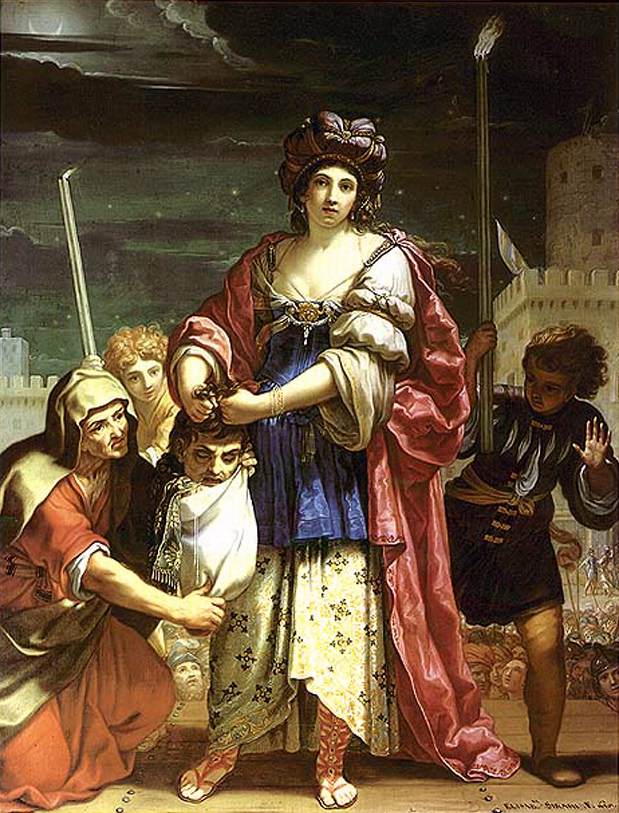
Elisabetta Sirani, Judith with the Head of Holophernes (second half of 17th century), oil on canvas. Photo: Courtesy of the Lakeview Museum of Arts and Sciences.
According to Modesti, Sirani created more history paintings and public works in her short career than any other woman painter before her. Her first major Bolognese public commission was for an impressively huge five-by-four meter Baptism of Christ, the largest altarpiece by a woman during the early modern era.
Another genre she was known for was that of the femme forte, or heroic women (a popular humanist subject of her time). In the 14 paintings Sirani created in this vein she chose unusual aspects of the stories—some never before introduced in easel painting. In her Judith Triumphant (1658) for example, which includes a self-portrait of Sirani as the Biblical Judith, she didn’t choose the violent act of decapitating Assyrian general Holofernes as Artemisia Gentileschi famously did, or alone with her servant and the severed head right after the act. Sirani depicted the moment when Judith returned victorious to her city as its savior, presenting Holofernes’s head to the people of Bethulia as reassurance that she’d redeemed them from invaders.
In another femme forte painting, Timoclea of Thebes (1659), Sirani draws on the ancient story of Timoclea who was raped by one of Alexander the Great’s captains. After raping her, he asked for Timoclea’s money and jewelry, and she told them they were hidden in a well in her garden. As he leaned over to look in, she pushed him down and stoned him to death. Tiepolo, painting the story later, illustrated the rape scene. Sirani painted Timoclea at the height of her powers—dynamically hurling the captain headfirst into the well and holding his splayed legs. This part of the story had never been painted before Sirani.
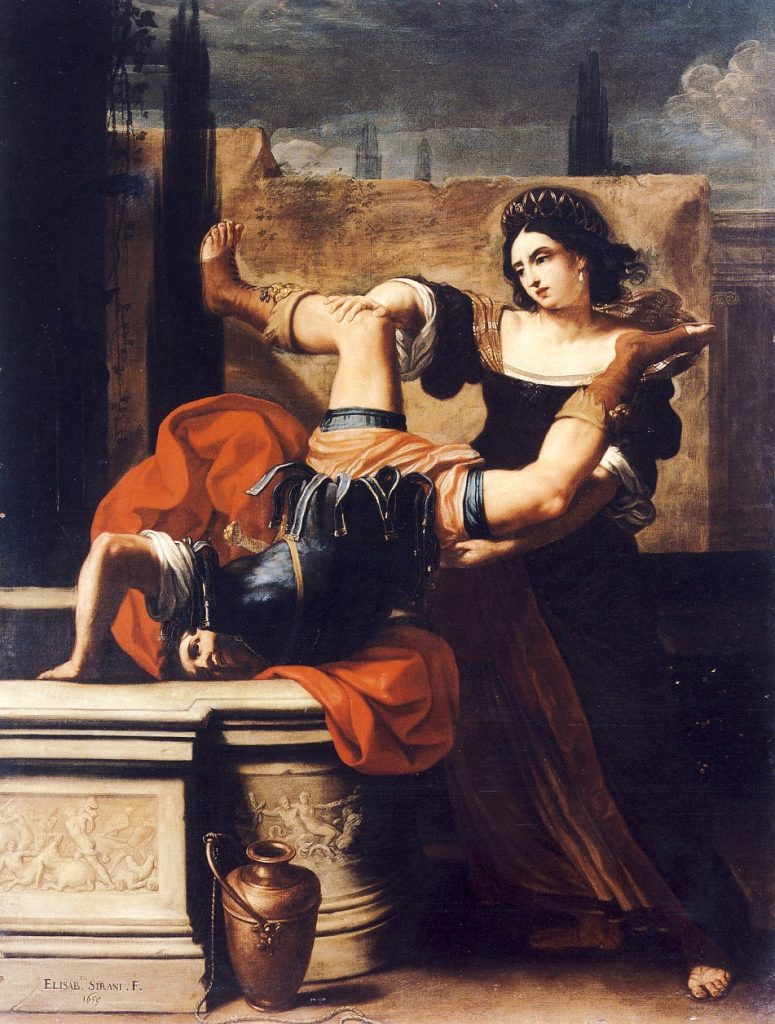
Elisabetta Sirani, Timoclea Kills the Captain of Alexander the Great (1659). Photo: Courtesy of the National Museum of Capodimonte.
Not only did Sirani actively distinguish herself from the way such stories had been painted before, but she also crafted an individual style that was different from that of her father. Over time, her female figures became less idealized and more natural, painted in broad brushstrokes and bold colors. Ultimately her work was more popular than her father’s, garnering higher prices.
When rumors started circulating that Sirani’s dad painted her artworks but she signed them to make them more marketable (being considered more special from the hand of a woman), she started habitually painting in front of an audience. Becoming a sort of spectacle, or Bolognese tourist attraction, Modesti writes that “everyone who was anyone would visit La Sirana to see her perform,” and “generally be seduced by her charming, and at times ironic, wit.”
Sirani was working on commissions for Holy Roman Empress Eleonora Gonzaga and Grand Duchess Vittoria della Rovere when she died a sudden and painful death at age 27. Though her father accused the maid of poisoning her, an autopsy revealed that Sirani had ulcers and holes in her stomach and died of natural causes.

Elisabetta Sirani, Portia wounding her thigh (1664), oil on canvas. Photo: Collezioni d’Arte e di Storia della Fondazione della Cassa di Risparmio, Bologna.
There was intense and widespread public mourning in Bologna following her death. She was buried next to Guido Reni in the church of San Domenico, and generally considered the “second Guido.” A few months after her death, she was given a civic funeral—an honor usually reserved for politicians and aristocrats. The memorial service was theatrically staged, with the highlight being a life-sized sculpted effigy of her painting a canvas.
“She was blessed with vivacious intelligence… excellent memory… fine judgement,” said Sirani’s eulogist, law professor Giovanni Luigi Picinardi. “Perfect knowledge of the science which she practiced.”
